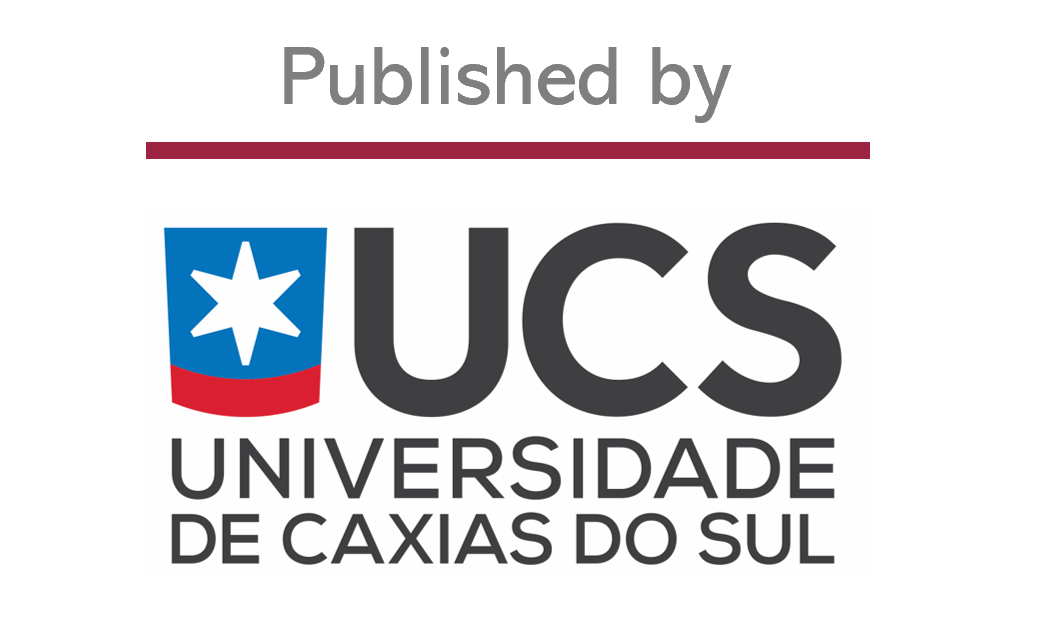Biological assessment and metals concentration in blue shark (Prionace glauca) caught in the southeast-south coast of Brazil
Abstract
Sharks are suffering from fishing industry pressure, mostly by human consumption of meat and fins, causing a great impact on its population. These top predators can bioaccumulate metals in its tissues, which brings risks to human health and indicates aquatic pollution. The objective of this work is to determine metallic trace elements as chromium, copper, zinc and aluminium in Prionace glauca, while studying the biological aspects such as fork length and approximate age to indicate if there is a metal accumulation in shark tissues evaluated. Nine specimens were obtained through commercial fishing in the Southeast and South regions of Brazil, using pelagic longline fishing. On arrival at the port, specimens were weighed and sexed in its commercial weight (headed, finned and gutted). About 100 g of muscular flesh from dorsal region between the dorsal and caudal fin was removed. Metal determination in muscle tissue (wet weight basis) was performed through acid digestion (mixture of HNO3 and H2O2). After the acid digestion, the metals concentration was determined by means of inductively coupled plasma optical emission spectrometry (ICP-OES). The results indicated that Prionace glauca capture during the winter in the Southeast-South regions of Brazil, consists mostly by small adult males. Copper, zinc and aluminium concentration was well below de maximum limits permitted by Brazilian and international agencies. Chromium average (0.14 mg/kg) was above the limits permitted by Brazilian legislation (0.10 mg/kg). A significant positive correlation was found between some metals (Al, Cr and Cu) and sharks fork length. These results corroborate the bioaccumulation of some metals in Prionace glauca, showing the need for more studies about metal determination in shark tissues.
References
Wang, W. X.; Rainbow, P. S. “Comparative approaches to understand metal bioaccumulation in aquatic animals.” Comparative Biochemistry and Physiology Part C: Toxicology & Pharmacology, v. 148, no. 4, p. 315-323, 2008.
Kanduč, T.; Medaković, D.; Hamer, B. “Mytilus galloprovincialis as a bioindicator of environmental conditions: the case of the eastern coast of the Adriatic Sea.” Isotopes in Environmental and Health Studies, v. 47, no. 1, p. 42-61, 2011.
Food and Agriculture Organization of the United Nations – FAO. The State of World Fisheries and Aquaculture Opportunities and challenges. Roma, 243p. 2014.
Castro, P.; Huber, M. E. Marine Biology. 4 ed. New York: McGraw-Hill, 456p. 2003.
Spiro, T. G.; Stigliani, W. M.; Yamamoto, S. M. Química Ambiental. 2 ed. São Paulo: Pearson Prentice-Hall, 334p. 2009.
Manahan, Stanley E. Fundamentals of environmental and toxicological chemistry: sustainable science. Boca Raton: CRC Press, 576p. 2013.
Braga, B.; Hespanhol, I.; Conejo, J.; Mierzwa, J. C.; Barros, M.; Spencer, M.; Porto, M.; Nucci, N.; Neusa, J.; Eiger, S. Introdução à Engenharia Ambiental: o desafio do desenvolvimento sustentável. São Paulo: Editora Pearson, 318p. 2005.
Domenico, P. A.; Schwartz, F. W. Physical and Chemical Hydrogeology. 2 ed. New York: John Wiley & Sons, 506p. 1998.
Baird, Colin; Cann, Michael. Environmental chemistry. 4 ed. New York: W. H. Freeman and Company, 776p. 2008.
Evangelou, V.P. Environmental Soil and Water Chemistry: principles and applications. New York: John Wiley & Sons, 564p. 1998.
Lopez, S. A.; Abarca, N. L.; Meléndez, R. C. “Heavy metal concentrations of two highly migratory sharks (Prionace glauca and Isurus oxyrinchus) in the southeastern Pacific waters: comments on public health and conservation.” Tropical Conservation Science, v. 6, no. 1, p. 126-137, 2013.
Barreto, R. R.; Bornatowski, H.; Motta, F. S.; Santander-Neto, J.; Vianna, G. M. S.; Lessa, R. “Rethinking use and trade of pelagic sharks from Brazil.” Marine Policy, v. 85, p. 114-122, 2017.
United States Environmental Protection Agency – EPA. EPA-FDA Fish Advice: Technical Information, 2017. Available in: <https://www.epa.gov/fish-tech/epa-fda-fish-advice-technical-information#main-content>. Accessed in: 01 December 2017.
de Carvalho, G. G. A.; Degaspari, I. A. M.; Branco, V.; Canário, J.; de Amorim, A. F.; Kennedy, V. H.; Ferreira, J. R. “Assessment of total and organic mercury levels in blue sharks (Prionace glauca) from the south and southeastern Brazilian coast.” Biological trace element research, v. 159, no. 1-3, p. 128-134, 2014.
Dias, A. C. L.; Guimarães, J. R. D.; Malm, O. “Mercúrio total em músculo de cação Prionace glauca (Linnaeus, 1758) e de espadarte Xiphias gladius Linnaeus, 1758, na costa sul-sudeste do Brasil e suas implicações para a saúde pública.” Cad. Saúde Pública, v. 24, no. 9, p. 2063-70, 2008.
Ferreira, A. G.; Faria, V. V.; Carvalho, C. E. V. D.; Lessa, R. P. T.; Silva, F. M. S. D. “Total mercury in the night shark, Carcharhinus signatus in the western equatorial Atlantic Ocean.” Brazilian Archives of Biology and Technology, v. 47, no. 4, p. 629-634, 2004.
Lacerda, L. D.; Paraquetti, H. H. M.; Marins, R. V.; Rezende, C. E.; Zalmon, I. R.; Gomes, M. P.; Farias, V. “Mercury content in shark species from the south-eastern Brazilian coast.” Revista Brasileira de Biologia, v. 60, no. 4, p. 571-576, 2000.
Morales-Aizpurúa, I. C.; Tenuta-Filho, A.; Sakuma, A. M.; Zenebon, O. “Mercúrio total em cação comercializado em São Paulo-SP, Brasil.” Ciência e Tecnologia de Alimentos, v. 19, no. 3, p. 429-432, 1999.
Lessa, R.; Santana, F. M.; Hazin, F. H. “Age and growth of the blue shark Prionace glauca (Linnaeus, 1758) off northeastern Brazil.” Fisheries Research, v. 66, no. 1, p. 19-30, 2004.
Hazin, F.H.V.; Boeckman, C.E.; Leal, E.C.; Lessa, R. P. T.; Kihara, K.; Otsuka, K. “Distribution and relative abundance of the blue shark, Prionace glauca, in the southwestern equatorial Atlantic Ocean.” Fishery Bulletin v. 92, no. 2, p. 474-480, 1994.
Association of Official Analytical Chemist - AOAC. Official Method 999.10. Lead, cadmium, zinc, copper and iron in foods - atomic absorption spectrophotometry after microwave digestion. Washington, DC, 2002.
Montealegre-Quijano, S.; Vooren, C. M. “Distribution and abundance of the life stages of the blue shark Prionace glauca in the Southwest Atlantic.” Fisheries Research. v. 101, no. 3, p. 168-179, 2010.
Montealegre-Quijano, S. Biologia populacional do tubarão-azul, Prionace glauca (Linnaeus, 1758), na região sudoeste do Oceano Atlântico. Tese de Doutorado em Oceanografia Biológica, Universidade Federal do Rio Grande, Rio Grande, 214p. 2007.
Hazin, F. H.; Kihara, K.; Otsuka, K.; Boeckman, C. E.; Leal, E. C. “Reproduction of the blue shark Prionace glauca in the south-western equatorial Atlantic Ocean.” Fisheries science, v. 60, no. 5, p. 487-491, 1994.
Machado, C. S. Quantificação do risco à saúde humana pela exposição a poluentes químicos e potencial carcinogênico às comunidades adjacentes ao Rio Pardo, Brasil, Tese de Doutorado em Ciências, Escola de Enfermagem de Ribeirão Preto, São Paulo, 175p. 2016.
Alves, L.M.; Nunes, M.; Marchand, P.; Le Bizec, B.; Mendes, S.; Correia, J.P.; Lemos, M.F.; Novais, S.C. “Blue sharks (Prionace glauca) as bioindicators of pollution and health in the Atlantic Ocean: Contamination levels and biochemical stress responses.” Science of the Total Environment, v. 563, p. 282-292, 2016.
Olmedo, P.; Hernández, A. F.; Pla, A.; Femia, P.; Navas-Acien, A.; Gil, F. “Determination of essential elements (copper, manganese, selenium and zinc) in fish and shellfish samples. Risk and nutritional assessment and mercury–selenium balance.” Food and chemical toxicology, v. 62, p. 299-307, 2013.
Vas, P. “Trace metal levels in sharks from British and Atlantic waters.” Marine pollution bulletin, v. 22, no. 2, p. 67-72, 1991.
Stevens, J. D.; Brown, B. E. “Occurrence of heavy metals in the blue shark Prionace glauca and selected pelagic in the NE Atlantic Ocean.” Marine Biology, v. 26, no. 4, p. 287-293, 1974.
Barrera-García, A.; O'hara, T.; Galván-Magaña, F.; Méndez-Rodríguez, L. C.; Castellini, J. M.; Zenteno-Savín, T. “Oxidative stress indicators and trace elements in the blue shark (Prionace glauca) off the east coast of the Mexican Pacific Ocean.” Comparative Biochemistry and Physiology Part C: Toxicology & Pharmacology, v. 156, no. 2, p. 59-66, 2012.
Brasil. Decreto n. 55871 de 26 de março de 1965. Modifica o Decreto nº 50.040, de 24 de janeiro de 1961, referente a normas reguladoras do emprego de aditivos para alimentos, alterado pelo Decreto nº 691, de 13 de março de 1962. Diário Oficial da União, Poder Executivo, Brasília, 09 abr. 1965.
Scientific Committee on Food – SCF. Scientific Panel on Dietetic Products, Nutrition and Allergies - Tolerable upper intake levels for vitamins and minerals. European Food Safety Authority (EFSA), 2006.
Institute of Medicine – IOM. Dietary reference intakes for vitamin A, vitamin K, arsenic, boron, chromium, copper, iodine, iron, molybdenum, nickel, silicon, vanadium and zinc. Food and Nutrition Board, National Academy Press, Washington, 2001.
European Food Safety Authority – EFSA. Scientific Opinion of the Panel on Food Additives, Flavorings, Processing Aids and Food Contact Materials on a request from European Commission on Safety of aluminium from dietary intake. The EFSA Journal, v. 754, p. 1-34, 2008.
Downloads
Published
How to Cite
Issue
Section
License
Declaração de originalidade e cessão de direitos autorais
Declaro que o presente artigo é original, não está sendo tendo sido submetido à publicação em qualquer outro periódico nacional ou internacional durante o processo de revisão. Através deste instrumento, em meu nome e em nome dos demais co-autores, porventura existentes, cedo os direitos autorais do referido artigo à revista SCIENTIA CUM INDUSTRIA. Contudo, a reprodução total ou parcial impressa ou eletrônica pode ser feita desde que o autor comunique oficialmente à revista. Declaro estar ciente de que a não observância deste compromisso submeterá o infrator a sanções e penas previstas na Lei de Proteção de Direitos Autorias. Declaro estar ciente de que a não observância deste compromisso submeterá o infrator a sanções e penas previstas na Lei de Proteção de Direitos Autorias (Nº9610, de 19/02/1998).





